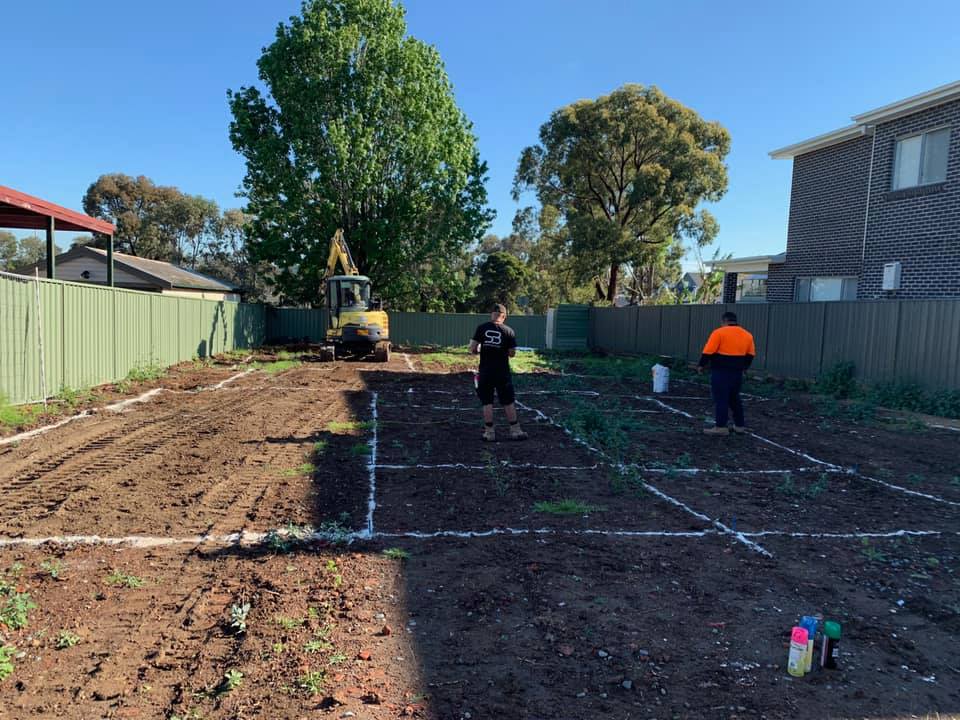In-Depth Examination of Living Expenses in San Miguel de Allende
What Key Factors Drive Living Costs in San Miguel de Allende?
To fully grasp the cost of living in San Miguel de Allende, it is essential to delve into multiple factors that play a significant role in determining overall expenses. These factors include housing, utilities, and food costs. Key elements that lead to fluctuations in living expenses encompass the local economy, neighborhood demand for housing, and the pricing of essential services. As San Miguel de Allende increasingly attracts expatriates, the demand in specific locales has surged, pushing up rental prices and property values, which can significantly affect the financial planning of new residents.
Housing expenses vary greatly based on the location and amenities offered. Properties in the historic center tend to have much higher rental rates compared to those on the outskirts of the city. Utility costs also fluctuate, influenced by personal consumption habits and the selected service providers, while food prices can change based on seasonal availability and local market dynamics. By understanding these critical factors, newcomers can devise budgeting strategies that enhance their confidence in financial management.
Moreover, cultural influences play a vital role in the variations of living costs. Local festivals and markets can temporarily elevate expenses, particularly concerning food and accommodation. By being aware of these trends, residents can better anticipate spending changes, ensuring their budgeting strategies align with the unique lifestyle offered by this vibrant city.
What Is the Typical Monthly Expenditure for Residents?
Understanding the average monthly expenses in San Miguel de Allende is invaluable for potential residents contemplating a move. Typically, individuals should expect to spend between $1,500 and $2,500 monthly, influenced by personal lifestyle choices and housing situations. Rent for a one-bedroom apartment in the city center usually falls between $600 and $1,200, while utility costs typically add an additional $100 to $200 to the monthly budget.
Grocery expenses can range from $200 to $400, depending on dietary preferences and shopping behaviors. Dining out offers various price points, with an average meal at a mid-range restaurant costing around $15 per person. In comparison to other expatriate-friendly cities like Lisbon or Medellín, San Miguel de Allende remains favorably priced, especially concerning housing and food, making it appealing for those seeking a fulfilling lifestyle.
Transportation costs are another significant component of the overall monthly budget. A monthly public transportation pass costs approximately $30, while owning a vehicle introduces additional expenses such as fuel and maintenance. Understanding these average costs is essential for newcomers, enabling them to manage their finances effectively and fully embrace the lifestyle that San Miguel de Allende has to offer.
What Are the Best Budgeting Techniques for New Residents?
For newcomers in San Miguel de Allende, establishing a robust budgeting plan is crucial. By applying effective strategies, individuals can manage their finances wisely and enjoy the city’s rich offerings without overspending. Here are some actionable budgeting tips designed to pave the way toward financial success:
- Thoroughly research housing options to uncover the best deals in sought-after neighborhoods.
- Shop at local markets for groceries, as they typically offer fresher and less expensive produce.
- Consider shared living arrangements to significantly cut rental costs.
- Take advantage of free or low-cost community events and activities.
- Monitor utility usage diligently to avoid unexpected charges and surprises in bills.
- Use public transportation instead of taxis or personal vehicles to save on travel costs.
- Prepare meals at home to reduce dining expenses, promoting healthier eating habits.
- Create a detailed monthly budget that allocates funds for both entertainment and unexpected expenses.
By implementing these strategies, residents can maximize their financial resources while immersing themselves in the vibrant culture and lifestyle of San Miguel de Allende. A proactive approach to budgeting fosters a sense of security, allowing individuals to fully enjoy their time in this enchanting city.
How Do Seasonal Changes Affect Living Expenses?
Living expenses in San Miguel de Allende can vary throughout the year due to factors such as tourism, local festivals, and seasonal weather changes. During peak tourist seasons, accommodation prices generally rise, while off-peak times can offer significant discounts. Residents should be prepared for these seasonal variations to manage their budgets effectively and avoid financial strain.
Recognizing the impact of local festivals is crucial, as they can drive up demand for food and services, resulting in temporary price hikes. For instance, during the Día de los Muertos celebrations, businesses might increase prices on traditional foods and souvenirs. Planning purchases with the calendar in mind can help mitigate these temporary spikes in expenses.
Furthermore, seasonal fluctuations in weather can influence utility costs, particularly regarding heating and cooling needs. Increased reliance on air conditioning during warmer months can lead to higher electricity bills, while cooler months may see an uptick in heating expenses. By anticipating these seasonal changes, residents can adjust their budgets accordingly, ensuring financial stability throughout the year.
How Do Living Costs Compare Across Different Cities?
When comparing the cost of living in San Miguel de Allende to other popular expatriate destinations, it becomes clear that it offers a unique balance of affordability and quality of life. Cities like Chiang Mai, known for its exceptionally low living costs, and Barcelona, recognized for its significantly higher price points, highlight stark contrasts to what San Miguel de Allende provides.
For example, while Chiang Mai is famous for its remarkably low rental prices—often below $300 for a one-bedroom apartment—San Miguel de Allende offers a richer cultural experience and a vibrant community atmosphere. In contrast, rental prices in Barcelona can exceed $1,500 for comparable accommodations. The affordability of San Miguel de Allende becomes even more notable when factoring in the quality of local amenities, healthcare, and culinary offerings available to residents.
Moreover, expatriates often emphasize factors beyond mere financial metrics when evaluating living costs. The sense of community, access to cultural experiences, and overall lifestyle significantly contribute to perceived value. While some cities may offer cheaper living arrangements, the environment and experiences available in San Miguel de Allende make a compelling case for its cost-effectiveness as an expatriate destination.
Expert Perspectives on Living Expenses in San Miguel de Allende
What Do Experts Say About Living Costs in San Miguel de Allende?
Experts emphasize that a comprehensive understanding of living costs in San Miguel de Allende requires a detailed analysis of the economic factors influencing daily expenses. Recent trends indicate a consistent rise in housing prices, largely driven by growing interest from both domestic and international buyers. This surge has resulted in rapid gentrification in certain neighborhoods, affecting affordability for long-term residents and highlighting the importance for newcomers to grasp the market dynamics.
Real estate analysts strongly recommend that prospective renters and buyers act quickly, as properties in sought-after neighborhoods have seen significant appreciation. The increasing demand for short-term rentals, particularly through platforms like Airbnb, has intensified this trend, leading to higher prices for traditional rental options. Experts advise potential residents to conduct thorough research on neighborhoods to find a suitable balance between cost and quality of life.
Additionally, economic shifts such as inflation and currency fluctuations can directly impact daily expenses. By staying informed about these trends, individuals can budget more effectively and prepare for potential cost increases. Keeping abreast of local economic conditions while consulting with financial advisors ensures that residents can navigate the financial landscape with confidence and foresight.
How Can You Prepare Financially for Moving to San Miguel de Allende?
Financially preparing for a move to San Miguel de Allende requires a strategic approach to facilitate a smooth transition. Initially, prospective residents should evaluate their current financial situation, including savings, income sources, and anticipated expenses. Establishing a realistic budget for the move is essential, encompassing costs such as shipping personal belongings, travel, and initial living expenses.
Opening a local bank account before the move is advisable. This step simplifies financial transactions and minimizes currency conversion fees, streamlining the overall financial management process. Understanding local tax regulations is also vital, as these can significantly affect financial planning and budgeting strategies.
Researching housing options in advance helps individuals identify neighborhoods that align with their budget and lifestyle preferences. Factors such as proximity to essential services, job availability, and community amenities can greatly influence living expenses. Connecting with local expat groups online can provide valuable insights and recommendations, enhancing the overall relocation experience.
Establishing a financial safety net is equally important. Experts recommend setting aside an emergency fund that covers at least three to six months of living expenses. This buffer accommodates unexpected costs and eases the transition into a new environment, providing reassurance during the adjustment period.
What Long-Term Financial Strategies Should You Consider in San Miguel de Allende?
Formulating sustainable long-term financial strategies is essential for maintaining financial health in San Miguel de Allende. First, individuals should consider diversifying their income streams. This can involve freelance work, launching a small business, or investing in real estate. Establishing multiple income sources not only enhances financial stability but also opens avenues for growth and exploration.
Another crucial aspect of long-term financial planning is making wise investments. Residents are encouraged to familiarize themselves with local investment opportunities, such as real estate or small business initiatives. Conducting thorough research and seeking guidance from local financial advisors can lead to informed decision-making, ultimately bolstering financial security.
Setting clear financial goals is vital for tracking progress and ensuring alignment with personal aspirations. These goals can encompass saving for retirement, purchasing property, or funding a child’s education. Regularly reviewing and adjusting these objectives based on changing circumstances ensures that individuals remain on track and adapt to shifts in their financial landscape.
Lastly, maintaining a budget that accommodates both short-term and long-term needs is essential for financial health. Automated savings plans can assist residents in consistently contributing to their financial goals while minimizing the temptation to overspend. By adopting a proactive and informed approach, individuals can achieve financial success and stability in San Miguel de Allende.
A Comprehensive Overview of Housing Expenses in San Miguel de Allende
What Are the Typical Rental Rates for Apartments in San Miguel de Allende?
Rental prices in San Miguel de Allende can vary significantly based on location and available amenities. Generally, individuals can expect to pay between $600 and $1,200 for a one-bedroom apartment in the city center, while properties in surrounding areas may offer more budget-friendly options. Factors influencing these variations include proximity to local markets, cultural attractions, and public transportation options, all of which enhance the overall living experience.
The condition of the property and its amenities are crucial in determining rental prices. Newly renovated apartments equipped with modern appliances and high-end finishes often command higher rents. Conversely, older properties or those lacking updates may be more budget-friendly but could entail additional maintenance costs. Prospective renters should carefully assess their priorities and budget accordingly to ensure a wise decision.
Additionally, lease duration plays a key role in pricing. Short-term rentals may come at a premium, while long-term leases typically offer more favorable rates. Negotiation is a common practice in the local housing market, making it wise for renters to inquire about potential discounts or offers that could lead to cost savings.
Moreover, demand for housing can fluctuate throughout the year, with high tourist seasons potentially causing price increases. Therefore, individuals should plan their housing searches strategically to take advantage of favorable conditions.
- The specific location within the city significantly influences rental prices.
- The age and condition of the property can greatly affect costs.
- Amenities provided (e.g., swimming pools, security features) can impact pricing.
- The duration of the lease agreement is an important consideration.
- Seasonal demand can substantially influence rental prices.
- Negotiation potential varies by property and market conditions.
- Market trends and broader economic conditions shape the housing landscape.
Being well-informed about these factors empowers individuals to make savvy rental decisions in the dynamic housing market of San Miguel de Allende.
Is Buying Property a More Cost-Effective Option Than Renting?
Deciding whether to buy or rent in San Miguel de Allende can significantly impact an individual’s financial stability. Renting may be the more cost-effective option for those seeking flexibility or uncertain about long-term commitments. Many expatriates find the ability to relocate easily without the responsibilities associated with homeownership to be a compelling advantage that enhances their living experience.
Conversely, purchasing property can represent a wise long-term investment. As demand for housing continues to rise, property values are likely to appreciate, allowing homeowners to build equity over time. Additionally, owning a home offers stability and control over living conditions, alleviating concerns about rising rental prices that could disrupt financial planning.
However, prospective buyers should also account for additional costs associated with homeownership, such as maintenance, property taxes, and insurance. Conducting thorough research and financial analysis is essential to making a well-informed decision that aligns with individual circumstances and financial goals.
Ultimately, the choice between buying and renting hinges on personal circumstances, including financial objectives, lifestyle preferences, and long-term aspirations. Consulting with local real estate experts can provide valuable insights, helping individuals determine the best course of action based on their unique situations.
How Do Neighborhoods Affect Housing Costs in San Miguel de Allende?
The selection of neighborhood within San Miguel de Allende profoundly impacts housing costs and overall living experiences. Areas with historical significance and vibrant cultural scenes typically command higher rental prices. For instance, neighborhoods like Centro Historico attract many expatriates due to their stunning architecture and proximity to vital amenities, though they often come with a premium price tag.
In contrast, neighborhoods farther from the city center, such as San Antonio or La Lejona, generally offer more affordable housing options while still fostering a delightful community atmosphere. These areas may appeal to families or individuals seeking a quieter lifestyle while maintaining access to essential services and amenities.
Safety, access to schools, and local amenities also play a critical role in neighborhood selection. Areas with reliable public transportation or nearby markets often attract families and professionals, which can drive housing prices higher. Prospective renters and buyers should balance their preferences against their budgets, considering which lifestyle aspects are most important to ensure a satisfying living experience.
Researching neighborhoods is essential not only for understanding rental prices but also for grasping community dynamics and cultural nuances within each area. Engaging with local residents, attending community events, and exploring neighborhoods firsthand can provide invaluable insights into the best places to call home in San Miguel de Allende.
How Do Utilities and Services Influence Living Expenses?
What Utilities Should Be Included in Your Budget?
Budgeting for utilities in San Miguel de Allende is a critical aspect of effective financial planning. Key utilities encompass electricity, water, gas, and internet services. Residents typically allocate around $100 to $200 monthly for these essential expenses, depending on consumption habits and usage efficiency.
Electricity costs can vary significantly based on usage, particularly during peak seasons when air conditioning becomes necessary. Water and gas prices generally remain more stable, although fluctuations can occur due to local infrastructure developments and supply issues. Internet service costs also vary in quality and pricing, with high-speed options widely available, ensuring residents stay connected.
Understanding these utility costs is essential for newcomers to plan their finances effectively. Establishing a monthly budget that anticipates potential increases in utility consumption helps ensure individuals maintain financial security. Engaging with neighbors and local resources can provide insights into average utility expenses, enabling residents to plan effectively and avoid unexpected financial surprises.
Additionally, some landlords may include utilities in the rent, simplifying budgeting efforts. However, it is crucial to clarify what is included and any usage limits to prevent unexpected charges that could strain finances.
How Can You Evaluate Utility Service Providers?
Choosing the right utility service providers can lead to significant cost savings in San Miguel de Allende. Several factors should guide this decision, including reliability, customer service, and pricing structures. Residents should research and compare different providers to identify the best options for their needs and budget.
For electricity and water services, it is advisable to check local reviews and recommendations from fellow residents. Understanding the billing structure, including fixed charges and usage rates, can help gauge overall costs effectively. Many residents find that switching to providers known for superior customer service and competitive pricing can result in lower monthly expenses and greater satisfaction with utility services.
When evaluating internet services, consider both speed and cost. Various providers offer different packages, some of which include additional features like television services. Carefully reviewing contracts ensures no hidden fees or unexpected charges could strain the budget.
Participating in community forums or social media groups focused on expat living can provide invaluable insights into the best service providers. Residents can share their experiences and recommendations, helping one another make informed choices that lead to both cost savings and improved service quality.
What Strategies Can Help Lower Utility Costs?
Implementing effective strategies to reduce utility costs is a practical approach to managing living expenses in San Miguel de Allende. Adopting energy-saving measures can lead to significant savings over time. Here are several effective strategies to consider:
- Utilize energy-efficient appliances to minimize electricity consumption and lower bills.
- Unplug electronics when not in use to prevent phantom energy costs that can accumulate over time.
- Be conscious of water usage, opting for low-flow fixtures and mindful habits where possible.
- Capitalize on natural light to lessen reliance on electric lighting during daytime hours.
- Use fans instead of air conditioning when feasible to save on cooling costs.
- Regularly check for leaks or inefficiencies in plumbing and insulation to avoid waste.
- Review bills monthly to identify any unusual spikes in usage and address them promptly.
- Participate in local energy-saving workshops or initiatives to learn more about conservation.
By adopting these strategies, residents can reduce their utility bills while contributing to a sustainable environment. Being aware of consumption patterns and taking proactive measures fosters a healthier relationship with energy and resources, ultimately benefiting both household budgets and the community at large.
Are There Regional Variations in Utility Costs?
Utility costs in San Miguel de Allende may demonstrate regional variations influenced by factors such as local infrastructure, service availability, and demand. Generally, urban areas experience higher utility costs due to increased consumption and demand from residents. However, some suburban locations may present lower rates, making them attractive to families and individuals seeking affordability without compromising quality of life.
Transportation infrastructure also impacts utility costs. Areas with better access to reliable utilities—such as electricity and water—tend to be more desirable, leading to potential price increases as demand rises. Conversely, more remote areas may face higher service costs due to logistical challenges in reaching those locations.
Additionally, seasonal changes can prompt fluctuations in utility pricing. For example, during hot summer months, electricity bills may surge as residents rely more heavily on air conditioning and cooling systems. Being aware of these regional differences enables individuals to tailor their budgets to accommodate potential variations, ensuring they remain financially prepared throughout the year.
Engaging with local community groups can provide essential insights into the best neighborhoods for utility costs, as residents frequently share their experiences and recommendations. This collaborative approach enhances understanding and aids in making informed decisions about where to reside in San Miguel de Allende.
Food and Grocery Expenses in San Miguel de Allende
What Are the Average Grocery Expenses in San Miguel de Allende?
Grocery costs in San Miguel de Allende can vary widely based on dietary preferences and shopping habits. On average, residents might spend between $200 to $400 monthly on groceries, influenced by individual lifestyle choices and shopping strategies. Local markets, known for their fresh produce, typically offer lower prices compared to larger supermarkets, making them an appealing option for cost-conscious shoppers.
Common items such as fruits, vegetables, and grains are generally affordable due to the abundance of local agriculture and seasonal availability. However, imported goods may carry a premium price tag, impacting overall grocery spending. Individuals who focus their diets on local foods can realize significant savings compared to those who rely heavily on imported items, allowing for healthier and more cost-effective meal planning.
Additionally, buying in bulk can lead to savings, especially for non-perishable goods. Many grocery stores offer discounts for larger quantities, and residents often find that community co-ops provide even better deals on staple products. Understanding local pricing trends enables individuals to effectively manage their grocery budgets and optimize their spending patterns, ultimately enhancing their culinary experience.
Shopping at local farmers’ markets not only supports the community but also allows residents to access seasonal produce at lower prices. By being strategic in grocery shopping, residents can enjoy a diverse diet while keeping their costs manageable and budget-friendly.
How Do Dining Out and Home Cooking Compare Financially?
The financial implications of dining out versus cooking at home in San Miguel de Allende can significantly affect overall food expenses. Eating at local restaurants typically ranges from $8 to $15 for a mid-range meal, while higher-end establishments may charge more. Conversely, preparing meals at home tends to be much cheaper, especially when utilizing local ingredients and seasonal produce.
Home cooking allows for complete control over ingredients, enabling healthier, customized meals that cater to individual preferences. Grocery shopping for staples can be cost-effective, particularly when purchasing from local markets. Many residents find that cooking at home not only saves money but also allows them to develop culinary skills while exploring local flavors more intimately, enriching their dining experiences.
However, dining out also offers social benefits, providing opportunities to connect with friends and experience the vibrant local cuisine. Striking a balance between both dining options is key. Many expats enjoy dining out occasionally, reserving it for special occasions or social gatherings while maintaining a routine of home-cooked meals during the week to effectively manage their budgets.
Ultimately, the decision between dining out and cooking at home depends on individual preferences and circumstances. By finding the right balance, residents can savor the vibrant culinary scene in San Miguel de Allende without overspending or compromising their financial goals.
What Strategies Can Help Save on Food Expenses in San Miguel de Allende?
Reducing food expenses in San Miguel de Allende is achievable through several strategic approaches. By incorporating practical strategies, residents can effectively trim their grocery and dining costs. Here are some methods to consider:
- Plan weekly meals to minimize impulsive purchases and reduce waste.
- Purchase seasonal produce, which tends to be fresher and more affordable at local markets.
- Utilize local markets for better deals on fruits and vegetables, often available at lower prices.
- Prepare larger portions and freeze leftovers for future meals, reducing food waste.
- Participate in community potlucks or shared meals to lower dining costs while fostering social connections.
- Limit dining out to special occasions or set a monthly budget dedicated to eating out.
- Look for coupons and promotional offers available at local grocery stores for additional savings.
- Join a community-supported agriculture (CSA) program for discounted produce and fresh goods.
By implementing these strategies, residents can maintain a diverse and healthy diet while keeping expenses under control. Being aware of local pricing and shopping habits encourages a more mindful approach to food spending, ultimately enhancing overall financial health and satisfaction.
How Should You Effectively Budget for Food Expenses?
Effective budgeting for food expenses in San Miguel de Allende is crucial for maintaining financial stability. Residents should allocate a specific percentage of their overall budget to groceries and dining, providing flexibility while ensuring essential needs are met. Establishing a monthly food budget, typically around 20-30% of total income, assists in managing expenses effectively and preventing overspending.
Monitoring food spending can yield valuable insights into patterns and areas for improvement. Utilizing budgeting apps or simple spreadsheets helps residents maintain awareness of their food-related expenses. Regularly reviewing spending allows for adjustments, ensuring alignment with financial goals and lifestyle preferences.
Additionally, setting specific savings targets for food can motivate individuals to explore cost-saving strategies. For instance, aiming to save a certain percentage on groceries each month encourages proactive shopping habits and fosters creativity in meal planning.
In the end, budgeting for food not only enhances financial control but also promotes healthier eating habits. By prioritizing food expenses and making conscious choices, residents can enjoy the culinary delights of San Miguel de Allende without compromising their financial well-being and overall lifestyle satisfaction.
What Is the Financial Impact of Food Waste?
Minimizing food waste can significantly reduce grocery costs in San Miguel de Allende. Understanding the financial implications of food waste is crucial for effective budgeting and sustainability. On average, households can waste as much as 30-40% of the food they purchase, leading to unnecessary expenses that can strain budgets.
Practical strategies for reducing food waste include meal planning, creating accurate shopping lists, and employing proper food storage techniques. By planning meals around available ingredients and ensuring leftovers are consumed promptly, residents can maximize food efficiency and freshness, ultimately saving money.
Moreover, engaging in composting can provide valuable insights into food waste patterns. By tracking what is discarded, individuals can make informed decisions regarding their purchasing habits, reducing overbuying and enhancing financial health. Supporting local producers through farmers’ markets also promotes a more sustainable approach, as fresh produce typically has a shorter shelf life, encouraging mindful consumption.
Overall, a commitment to reducing food waste not only saves money but also fosters a more sustainable lifestyle. By adopting mindful consumption practices, residents can enjoy the culinary richness of San Miguel de Allende while contributing to a healthier planet and community.
Transportation Costs in San Miguel de Allende
What Are the Expenses Related to Public Transportation?
Public transportation in San Miguel de Allende is both affordable and accessible, making it a preferred option for many residents looking to minimize living expenses. The typical monthly pass for public transit costs around $30, offering unlimited access to buses and other forms of public transport. This option is particularly appealing for individuals wanting to navigate the city without incurring high transportation costs.
The local bus system operates efficiently, serving various neighborhoods and key destinations. Buses are generally safe, clean, and punctual, making them a reliable commuting option for residents. Moreover, taxis and rideshare services like Uber are available, although they may incur higher fees than public transportation.
For those seeking to save on transportation costs, utilizing public transit is a practical choice. Familiarizing oneself with the routes and schedules can significantly enhance convenience, allowing individuals to explore the city without incurring high transportation expenses that could affect their overall budget.
Additionally, investing in a bicycle can serve as a cost-effective and environmentally friendly alternative for shorter distances. Many residents find cycling a viable option due to the relatively flat terrain and scenic routes, further reducing transportation costs while promoting a healthier lifestyle.
What Are the Expenses and Considerations of Car Ownership?
Owning a car in San Miguel de Allende entails several ongoing expenses beyond the initial purchase price. Costs related to insurance, maintenance, fuel, and parking can accumulate quickly. On average, residents may expect to spend around 0 to 0 monthly on these expenses, which can strain budgets if not carefully managed.
Insurance costs can vary based on coverage type and individual driving history, but securing adequate protection is imperative. Maintenance and repair costs are also essential considerations, as older vehicles may require more frequent servicing, adding to the overall expenditure.
Fuel prices in San Miguel de Allende are generally reasonable, although fluctuations can occur based on global oil prices. Residents should factor in fuel expenses, especially if commuting daily or traveling outside the city frequently, to ensure their budgeting reflects actual transportation needs.
Parking can present challenges, particularly in busy areas of the city. Some neighborhoods have limited parking options, prompting residents to consider additional costs associated with parking garages or permits, which can impact the overall cost of ownership. Evaluating these factors is crucial when determining whether to own a car or rely on public transportation for daily commuting.
Ultimately, individuals should assess their transportation needs, lifestyle, and budget when deciding whether car ownership is the right choice in San Miguel de Allende, taking into account the potential costs and benefits associated with each option.
What Alternative Transportation Options Are Available?
Exploring alternative transportation options in San Miguel de Allende can yield significant cost savings and enhance overall local experiences. Beyond public transit and car ownership, several viable alternatives exist for residents seeking affordable mobility solutions.
Biking is increasingly popular, with many residents opting for bicycles as a practical mode of transport. The city’s relatively flat terrain and mild climate make cycling an appealing option for both commuting and leisurely exploration. Investing in a quality bicycle can lead to long-term savings while promoting a healthier lifestyle and reducing reliance on motor vehicles.
Walking serves as another excellent alternative, especially for those residing near essential services and amenities. The pedestrian-friendly layout of San Miguel de Allende allows residents to explore the city’s historical sites and vibrant neighborhoods on foot, fostering a deeper connection with the community and surrounding environment.
For covering longer distances, rideshare services like Uber are also available, providing a convenient option without the costs associated with car ownership. Carpooling with neighbors or friends can further reduce expenses while encouraging social interactions and community building.
Additionally, local services often provide shuttle options for popular destinations, enabling residents to benefit from group rates while exploring the area. Exploring these alternatives not only saves money but also contributes to a more environmentally friendly lifestyle, which is a growing priority for many residents.
Ultimately, leveraging a combination of transportation options tailored to individual needs can enhance mobility while keeping costs in check in San Miguel de Allende, allowing residents to enjoy everything the city has to offer without overspending.
Healthcare and Insurance Costs in San Miguel de Allende
What Are the Typical Costs of Healthcare Services?
Healthcare expenses in San Miguel de Allende are generally lower than in many Western countries, making it an appealing destination for expatriates seeking quality medical care without overwhelming costs. On average, residents might expect to spend around to 0 monthly on routine medical services, contingent on individual needs and preferences, making healthcare accessible for many.
Local clinics and hospitals provide a diverse range of services, from routine check-ups to specialized treatments. Many doctors are bilingual and experienced in treating international patients, ensuring that expatriates receive quality healthcare tailored to their needs. While basic services are affordable, more complex treatments may incur higher costs, prompting residents to consider their healthcare requirements when forming their budgets.
Prescription medications are also reasonably priced, with many common drugs costing significantly less than in their home countries. Understanding local pharmacies and healthcare providers can improve access to affordable medications and medical services, ensuring residents can maintain their health without overspending their budgets.
Connecting with local expat communities can provide invaluable insights into recommended healthcare providers and hospitals. Personal experiences often yield recommendations for quality care and affordability, aiding newcomers as they efficiently navigate the healthcare landscape in San Miguel de Allende.
How to Choose the Right Health Insurance Plan?
Selecting an appropriate health insurance plan is vital for expatriates in San Miguel de Allende. Key factors to consider include coverage options, premium costs, and the network of healthcare providers. Many expatriates select international health insurance plans that provide global coverage, ensuring access to quality care regardless of location.
Understanding the nuances of local health insurance—such as the availability of private versus public healthcare—can further inform decisions. While public healthcare is accessible, many expatriates prefer private insurance due to shorter wait times and more personalized care experiences.
When evaluating health insurance options, residents should compare various plans based on their needs, including family coverage, outpatient services, and emergency care. Assessing the network of doctors and clinics within the insurance plan is essential to ensure compatibility with local healthcare providers, guaranteeing seamless access to necessary services.
Consulting with local insurance agents can be beneficial, as they can assist in tailoring a plan that aligns with individual needs and budget constraints. Taking the time to research and evaluate health insurance options ensures that residents are well-equipped for any medical situations that may arise, promoting peace of mind in their new environment.
What Strategies Can Help Reduce Healthcare Costs?
Saving on healthcare costs in San Miguel de Allende is achievable through several practical strategies. First, individuals should prioritize preventive care, engaging in regular check-ups and screenings to identify potential health issues early. This proactive approach not only enhances overall well-being but also lessens future medical expenses and associated financial burdens.
Utilizing local clinics and healthcare professionals can lead to cost-effective care. Many doctors offer competitive pricing, particularly for routine consultations and preventive services. Establishing a relationship with a local healthcare provider fosters trust and ensures quality care that aligns with individual needs.
Additionally, understanding options for prescription medications is crucial for managing costs effectively. Many residents find that purchasing medications from local pharmacies is significantly cheaper than in their home countries. Researching generic alternatives can further reduce expenses while ensuring necessary treatments remain accessible and affordable.
Joining local health-focused community groups can also provide valuable resources for navigating healthcare costs. Members often share tips, discounts, and recommendations for affordable services, fostering a supportive network for residents looking to manage their healthcare expenses effectively and maintain their well-being.
In summary, strategic planning and community engagement can lead to substantial savings in healthcare costs, allowing residents to prioritize their health without financial strain and ensuring they can fully enjoy their lives in San Miguel de Allende.
How to Understand Health Insurance Coverage?
Gaining a clear understanding of health insurance coverage is essential for navigating the complexities of medical care in San Miguel de Allende. Different plans offer varying levels of coverage, including preventive care, hospitalization, and emergency services. Residents should familiarize themselves with the key elements of their insurance policies to ensure they receive appropriate care when needed.
Specific aspects to consider include deductibles, co-pays, and out-of-pocket maximums. Understanding these terms enables residents to anticipate potential costs associated with medical services and plan their finances accordingly. Additionally, it is crucial to comprehend what services are covered and whether referrals are necessary for specialized care, ensuring seamless access to essential treatments.
Residents should also inquire about coverage limits for different types of care, such as outpatient services, prescription medications, and emergency transportation. A well-rounded grasp of insurance coverage can help individuals make informed decisions regarding their healthcare needs and financial planning.
Engaging with local expat communities and health insurance representatives provides opportunities to clarify any uncertainties about coverage options. Asking questions and seeking shared experiences fosters confidence in navigating the healthcare landscape and ensuring that residents receive the care they need without undue stress.
Ultimately, understanding health insurance coverage empowers residents to access quality medical services while ensuring financial preparedness for any healthcare needs that may arise in their new home.
How to Navigate Healthcare Systems While Living Abroad?
Navigating healthcare systems abroad can be daunting for expatriates in San Miguel de Allende. Understanding how the local healthcare operates is crucial for accessing services efficiently and effectively. Unlike healthcare systems in many home countries, the systems abroad may differ significantly, making it essential to familiarize oneself with local practices and procedures.
Many expatriates find that private healthcare offers a more streamlined experience, with shorter wait times and personalized care. Researching local hospitals, clinics, and specialists is vital for identifying reputable providers that meet individual healthcare needs. Local expat communities can also serve as invaluable resources, offering recommendations and insights based on personal experiences that can help newcomers acclimate quickly.
Language barriers may present challenges when interacting with healthcare professionals. However, many local doctors speak English, facilitating communication and ensuring that expatriates can express their medical needs and concerns effectively. Being proactive in discussing health issues helps build rapport and ensures that residents receive appropriate and timely care.
Furthermore, understanding emergency procedures is essential. Familiarizing oneself with the locations of nearby hospitals and emergency services provides peace of mind. Knowing local emergency numbers and protocols ensures that residents are prepared for unexpected situations that may arise.
Ultimately, a proactive approach to understanding and navigating the healthcare system fosters confidence and facilitates access to essential medical services in San Miguel de Allende, ensuring that residents can maintain their health and well-being with ease.
Research-Backed Benefits of Living in San Miguel de Allende
What Economic Advantages Does Living in San Miguel de Allende Provide?
Living in San Miguel de Allende presents numerous economic benefits that contribute to its appeal as an expatriate destination. The overall cost of living is considerably lower than in many Western countries, allowing residents to maximize their budgets while enjoying a high quality of life. This affordability extends to housing, food, and healthcare, granting individuals the financial freedom to explore and engage in leisure activities and cultural experiences.
The thriving local economy, driven by a blend of tourism and agriculture, creates substantial opportunities for employment and entrepreneurship. Many expatriates find success by establishing businesses catering to both tourists and residents, contributing to the local economy while enjoying the advantages of lower overhead costs and a supportive community environment.
Additionally, San Miguel de Allende’s artistic community fosters creativity and innovation, attracting individuals from diverse fields. The combination of lower living costs and a vibrant cultural scene often leads to enhanced job satisfaction and personal growth, making it an attractive option for those seeking a fulfilling lifestyle.
Moreover, favorable exchange rates for expatriates can further amplify economic benefits. Individuals earning foreign currencies often find that their purchasing power in San Miguel de Allende affords a more enriching lifestyle than in their home countries. Overall, the economic landscape supports a harmonious blend of affordability and opportunity, enriching the overall living experience.
How Does Living in San Miguel de Allende Enhance Quality of Life?
Residing in San Miguel de Allende can significantly elevate one’s quality of life, offering a rich tapestry of cultural experiences, social connections, and natural beauty. The city’s vibrant atmosphere, characterized by its colonial architecture and dynamic arts scene, creates an enriching environment for residents that promotes creativity and personal fulfillment.
Access to high-quality healthcare, combined with lower costs, promotes peace of mind for individuals and families. Expatriates frequently report higher levels of well-being due to affordable healthcare and a slower-paced lifestyle that encourages balance and personal growth. Additionally, the temperate climate allows for year-round outdoor activities, contributing to both physical and mental wellness.
Social connections represent another crucial element of improved quality of life. The close-knit expat community fosters networking and friendship, providing support for newcomers adjusting to their new environment. Many residents actively engage in local events, volunteer opportunities, and cultural activities, cultivating a sense of belonging and community.
Furthermore, the chance to explore various facets of Mexican culture—from culinary delights to traditional celebrations—enriches residents’ lives. The cultural diversity found in San Miguel de Allende encourages openness and curiosity, enhancing overall life satisfaction and providing opportunities for personal and social growth.
How Does Cost of Living Influence Lifestyle Choices?
The cost of living in San Miguel de Allende greatly shapes lifestyle choices, influencing how residents allocate resources and prioritize experiences. With lower expenses across housing, food, and healthcare, individuals often enjoy greater flexibility in their financial planning, enabling them to pursue interests and passions that enrich their lives.
For many residents, affordable living allows for increased leisure activities, travel, and personal development opportunities. The ability to allocate funds toward enriching experiences—such as classes, workshops, or local tours—enhances quality of life and fosters personal growth, enabling individuals to explore their interests and passions more freely.
Additionally, the economic landscape encourages residents to explore entrepreneurial ventures or side projects. The reduced costs associated with launching a business enable individuals to pursue their passions without the constraints typically found in higher-cost cities, promoting creativity and innovation within the community.
Moreover, affordability contributes to a more relaxed lifestyle, alleviating financial stress and promoting overall well-being. This shift in focus from mere survival to enjoying life cultivates a positive community atmosphere, where residents can engage in social and cultural activities more freely and enjoyably.
Ultimately, the cost of living in San Miguel de Allende empowers residents to make choices that resonate with their values and aspirations, leading to a fulfilling and enriched life experience in a vibrant and welcoming community.
Education and Childcare Costs in San Miguel de Allende
What Are the Costs Associated with Education in San Miguel de Allende?
Education expenses in San Miguel de Allende can vary significantly based on the type of schooling chosen. Public education is provided free of charge, but many expatriates opt for private or international schools that offer a bilingual curriculum and a different cultural experience. The average annual tuition for private schools typically ranges from $3,000 to $10,000, making quality education attainable for families.
Private institutions often provide smaller class sizes, personalized attention, and extracurricular activities that can enhance the overall educational experience for children. Parents should conduct thorough research on local schools to find the best fit for their children’s needs, considering aspects such as curriculum, location, and reputation, ensuring that educational investments yield long-term benefits.
While the initial costs of private education may appear high, many families find that the quality of education justifies the expense. In comparison, tuition for similar institutions in the United States or Europe can be significantly higher, making San Miguel de Allende an appealing option for expatriate families seeking quality education for their children.
Furthermore, establishing a good rapport with local educators can yield valuable insights into the educational landscape, assisting parents in making informed decisions regarding their children’s schooling and helping them navigate the local education system effectively.
What Are the Childcare Expenses and Available Options?
Childcare can represent a substantial expense for families in San Miguel de Allende. Costs vary based on the type of care chosen, with options ranging from daycare centers to private nannies. On average, families might anticipate spending between $300 to $800 monthly for childcare services, depending on the hours needed and the level of care required.
Daycare centers generally charge lower rates compared to hiring a private nanny, making them appealing for families with multiple children. However, private nannies offer personalized attention and flexibility, allowing families to tailor their childcare arrangements to suit their specific needs and preferences.
Several local organizations and expat communities provide resources and recommendations for childcare options, helping parents navigate their choices effectively. Engaging with other families can yield valuable insights into the best providers and practices in the area, fostering a supportive network for families adjusting to new childcare arrangements.
Ultimately, understanding childcare costs and available options informs budgeting decisions, enabling families to secure quality care while managing their finances effectively and ensuring their children are well cared for in a nurturing environment.
How to Budget for Education and Childcare Expenses Effectively?
Budgeting for education and childcare expenses in San Miguel de Allende is crucial for families seeking financial stability. Establishing a specific allocation within the overall budget, typically around 10-20% of monthly income, allows for effective financial management while ensuring essential needs are met.
Parents should account for both recurring monthly expenses, such as tuition and childcare fees, as well as additional costs such as school supplies, extracurricular activities, and transportation. Anticipating these expenses aids families in avoiding financial strain, ensuring that essential needs are met without sacrificing quality.
Regularly reviewing the education and childcare budget enables families to make necessary adjustments. Identifying areas for potential savings, such as sharing resources with other parents or seeking scholarships for private schools, fosters a proactive approach to financial planning that can yield long-term benefits.
Moreover, creating an education savings fund can provide peace of mind for parents. Setting aside a small amount each month can accumulate over time, ensuring that families are prepared for future educational expenses without incurring debt or financial hardship.
Ultimately, effectively budgeting for education and childcare expenses promotes a sense of security, enabling families to prioritize their children’s needs while maintaining financial well-being in their new environment.
Frequently Asked Questions About Living Expenses in San Miguel de Allende
What is the average monthly cost of living in San Miguel de Allende?
The average cost of living in San Miguel de Allende ranges from $1,500 to $2,500 monthly, depending on housing, food, and lifestyle choices, making it an attractive option for many expatriates.
How much does renting an apartment cost in San Miguel de Allende?
Rent in San Miguel de Allende typically ranges from $600 to $1,200 for a one-bedroom apartment in the city center, varying according to location and amenities offered.
What transportation options are available in San Miguel de Allende?
Public transportation is affordable, with monthly passes priced around $30. Biking and walking are also popular options, while rideshare services like Uber are readily available for convenience.
How much do groceries typically cost in San Miguel de Allende?
Monthly grocery expenses typically range from $200 to $400, depending on dietary preferences and shopping habits, with local markets often offering better deals on fresh produce.
What is the healthcare system like in San Miguel de Allende?
Healthcare costs are generally lower than in Western countries, with routine services averaging $50 to $150 monthly, and many bilingual healthcare providers available to assist residents.
Are there quality schools for expatriate children in San Miguel de Allende?
Yes, San Miguel de Allende offers several private and international schools with annual tuition ranging from $3,000 to $10,000, providing quality education options for expat families.
How can I save money on utilities in San Miguel de Allende?
To save on utilities, utilize energy-efficient appliances, unplug devices when not in use, and monitor consumption closely to avoid surprises on bills that can strain budgets.
What are some effective budgeting tips for new residents?
New residents should conduct research on housing options, utilize local markets for groceries, consider shared living arrangements, and set up a monthly budget to manage expenses effectively.
How does the cost of living compare to other expatriate destinations?
San Miguel de Allende generally offers a competitive cost of living compared to other popular expatriate destinations, balancing affordability with cultural richness and quality of life.
What childcare options and associated costs are available?
Childcare costs in San Miguel de Allende range from $300 to $800 monthly, with options including daycare centers and private nannies to suit different family needs and preferences.
The Article: Cost of Living in San Miguel de Allende: Your Complete Guide appeared first on https://fallinginlovewithsanmiguel.com/





























